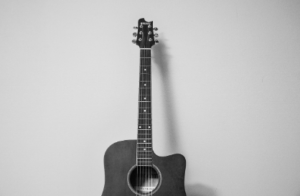Martin guitars are some of the world’s top-selling acoustic guitars, known for their rich heritage and attractive designs that appeal to guitarists of all skill levels.
 Large-bodied guitar players may prefer an OM (size 18) for its balanced tone, though this size requires additional force to resonate properly.
Large-bodied guitar players may prefer an OM (size 18) for its balanced tone, though this size requires additional force to resonate properly.
Materials
Studio1Vintage Martin guitar are most often constructed using solid wood, though there are a few models made using less expensive materials such as laminated tops and backs with thin layers of wood and epoxy pressed together; most inexpensive guitars feature laminated tops, backs and sides crafted using Sitka or Lutz spruce with clear finishes protecting the veneer.
The smallest guitars from OM are identified with numbers starting with zero: 00 is the smallest, while 000 is slightly bigger. Both models are ideal for fingerstyle players as their tones are balanced and respond well to playing dynamics, and many even feature herringbone trim and X-bracing, introduced on 12-fret 000-sized models in 1930 for greater volume without compromising tone quality.
Solid wood guitars age over time, and their sound changes as they do. While older flattops may not resonate as much as newer instruments, many older models still produce great tone – particularly those dating from the 1920s-1944 steel string models made using Brazilian rosewood. Martin has enjoyed tremendous success since these instruments entered production; collectability continues to skyrocket; some affordable versions from this era, such as those featuring solid mahogany necks with Sitka Spruce VTS tops, are still worth owning today.
Body & Neck
Studio1Vintage Martin guitar are well known for their quality and richness; however, their cost can often exceed expectations. To offset production costs more affordably, many more affordable models feature laminates (or pressed woods) instead of solid spruce wood; laminates are composed of compressed fibres bonded together using resin glue and then covered by protective plastic sheeting; while not offering the tonal brilliance or warmth associated with other wood types they remain strong, durable, climate resistant options.
Martin model numbers typically denote body size and style; the higher the number, the fancier its materials. For instance, a 000-18 is a small body in Style 18 made from mahogany with a spruce top, dark binding, an unbound neck with white dots on its fingerboard, dark binding and dark binding around the fingerboard.
The Martin OM was introduced as their inaugural new body size in 1934 and represents their attempt to create an acoustic guitar that works well with steel strings. To accomplish this task, they squashed down almost flat slope shoulders while adding two extra frets on the neck; this allows it to sound more like a larger 000 and allows heavier stringing techniques used by steel-string players. Furthermore, its neck has a width of 1-3/4″ at the nut and taper that ends in a 2-1/8″ taper, providing a wider fingerboard than older 1-11/16″ necks.
Hardware
Martin has long been associated with flat-top acoustic guitars due to their innovative innovations such as X-bracing and the dreadnought body shape, creating iconic instruments with iconic looks such as their signature Dreadnought body style. Their history and legacy helped establish modern six-stringers – making Martin an indispensable choice.
Though they were facing hard times during the Great Depression, they managed to remain innovative. In 1929 they introduced the Orchestra Model, an acoustic guitar with a deeper body than their earlier fan-bracing models that enabled them to create larger and more robust instruments without altering their tone.
Sound
Studio1Vintage Martin guitar are known for producing sound with solid clarity and articulation, making them the preferred choice of many professional musicians for fingerstyle playing and other styles that require precise note separation. Furthermore, their distinctive sound helps them cut through an ensemble of instruments on stage to be heard clearly above them – another benefit they provide professional musicians when used live onstage.
Researchers are exploring the effects of different materials and construction techniques and testing individual components such as rosewood and spruce back and sides, comparing their tonal qualities against more affordable options such as sapele and maple woods. Furthermore, they are conducting tests with synthetic materials like high-pressure laminated wood (HPL)–an aerospace material composed of thin layers of wood covered by epoxy–and micarta (a material comprising paper layers embedded with epoxy).
